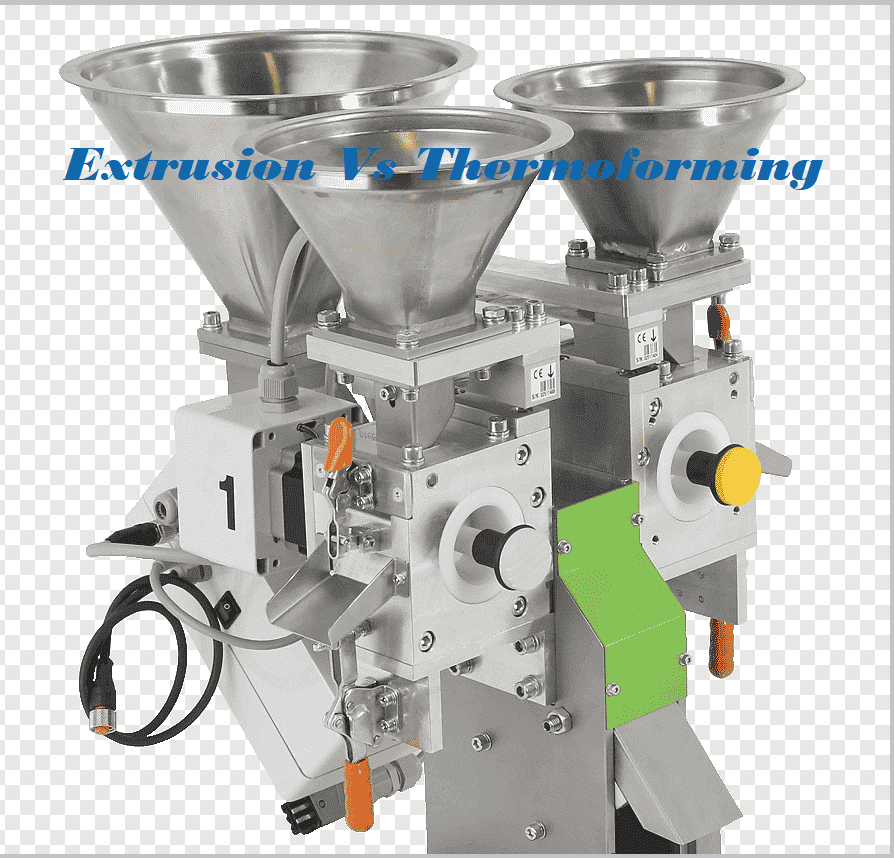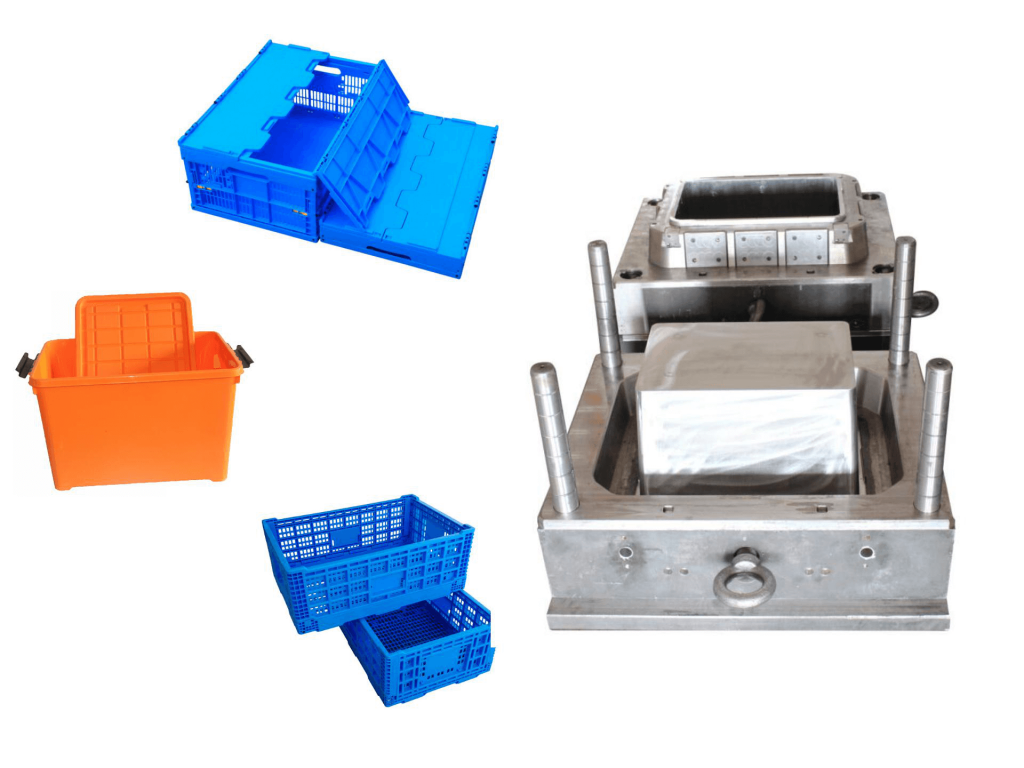Fabricante de piezas moldeadas de plástico: diferencia entre termoformado y extrusión
Fabricante de piezas moldeadas de plástico: Moldeo por extrusión Vs Termoformado
Un fabricante de piezas de plástico moldeado ofrece diversidad en cuanto a técnicas de moldeado. Además de los métodos de moldeo populares como inyección y rotacional. Hay dos técnicas de moldeo más eficaces, a saber, el termoformado y el moldeo por extrusión.
Both of these techniques offer a number of benefits. They come with their advantages and disadvantages. Although, both techniques offer to end up moulding plastic, but the way they go about it is different. In this article, we are going to talk about the difference between these two techniques.

What a Plastic Molded Parts Manufacturer has to say about these techniques?
Having a basic understanding of both these techniques would help you make a better decision when it comes to choosing a plastic moulding method for your custom plastic parts.
Extrusion Molding
The process of extrusion molding is similar to that of injection molding. However, there is a slight difference, it tends to produce a long continuous shape. In addition, extrusion molding does not use a mold, on the contrary, it uses a die.
To make the parts, the technique squeezes hot raw material via a custom die. To make it easier for you to understand, we can say that it is like squeezing play Doh via a shaped hole. Unlike other molding techniques that put resins into a mould, extrusion puts it directly into the die shape.
So, here the die instead of the mold determines the shape of the desired product.
The Step by Step Process
Step 1: Raw plastic material including powder, pellets, granules are put into a hopper, later the material is shifted into an extruder. It is a hot long cylindrical chamber. To move the material through the chamber, it uses a revolving screw.
There are some extruders more than one revolving screw.
Paso 2: Hay un tornillo giratorio en funcionamiento, la materia prima fluye desde las tolvas hacia este tornillo giratorio. Para el funcionamiento del tornillo giratorio, utiliza un barril horizontal.
Paso 3: Dado que cada material tiene propiedades diferentes, el calentamiento de cada materia prima es diferente. Se tiene en cuenta el requisito de temperatura de un determinado material. Para formar la forma deseada, el plástico fundido se pasa a través de la matriz.
Es la pequeña abertura presente al final de la cámara calentada.
Paso 4: Para fines de enfriamiento, el plástico extruido de la matriz se coloca en una cinta transportadora. Un fabricante de piezas de plástico moldeado puede utilizar aire o agua para enfriar.
The process is similar to that of the injection molding. However, instead of the mould, here you would be using a die.
Step 5: It is important to design the die for every individual plastic profile. This would ensure the smooth flow of plastic from the cylindrical profile to the extruder. Thus, taking the final shape.
To ensure that the end product offers integrity, consistency in the flow is imperative.
Extrusion Moulding Common Use
If you want the parts to have a cross-sectional profile, use the extrusion moulding technique. For instance, PVC piping, hoses, and the straws. There is no need for the parts to be round. However, it is vital for them to have the same shape along the part’s length.
When you compare the cost of extrusion molding to other moulding process, you will realize that it is cost-efficient. Mainly because of the die and the machine are simple. They lack the complexity that is innate in molds and machines of other moulding processes.
Since it lacks complexity, thus it has its limitation. You can create only a number of products via this particular technique.
Best Uses of Extrusion Molding
You can design and manufacture parts that are simple and have a fixed cross-sectional profile. For instance, products are either have a circle shape and square.
Productos Comunes
- Plastic Gutters
- PVC pipe
- Plastic Decking
- Straws and Hoses
Thermoforming
Thermoforming is an effective manufacturing process in which the sheet plastic – thermoplastic—is heated to forming temperature. The reason for doing so is to allow the sheet to form the specific shape in the mould.
It later is trimmed to create products. The great thing about thermoplastic sheets is that it comes in a wide range of materials, thickness, finishes, and colors.
To achieve the final product thermoforming does not reply to a certain type of process or a mould. On the contrary, it uses multiple molds along with the different processes to acquire the required shape. For 3D products, it is generally a single 3D mould.
Plastic Mould Parts Manufacturer uses aluminum for the creation of these 3D molds. Since the technique uses less pressure, therefore, it is possible to create parts or components at a lower rate.
Types of Thermoforming
There are two basic types of thermoforming: pressure forming and vacuum forming. Both techniques yield effective results, but there is a slight difference between the two.
Vacuum forming uses pressure and heat to draw the plastic into the respective shape. It first heats the sheet and then places it into the mould. To ensure that the plastic takes the final shape, it is manipulated using the vacuum.
La formación de presión, por otro lado, es similar a un vacío. Sin embargo, tiene el beneficio adicional de la presión. Con presión, es posible lograr mayores detalles y textura. Por lo tanto, si tiene que elegir entre los dos, la formación a presión es la mejor opción.
Usos comunes del termoformado
El termoformado, especialmente el calibre de hojalata, es extremadamente popular para producir bandejas, blísteres, recipientes, vasos desechables, conchas, tapas, entre otras cosas. Es común entre los alimentos como lo hacemos con la industria minorista en general.
Para algo más resistente y más grande, los fabricantes optan por el termoformado de calibre grueso. Por ejemplo, es una técnica eficaz para revestimientos de refrigeradores, puertas de vehículos, camas de vehículos utilitarios y paneles de instrumentos.
Costo y tiempo de producción
El termoformado puede ser una técnica de moldeo de plástico económica; sin embargo, lleva tiempo. En promedio, necesitaría alrededor de 8 semanas para que el molde termoformado esté listo. Una vez que el molde está listo, comienza la producción.
La fase de fabricación es más rápida. Sin embargo, tenga en cuenta que el costo de la técnica depende en gran medida del tamaño de la pieza del componente. Por ejemplo, si desea moldear piezas de tamaño pequeño, le costaría $ 20,000 al año.
Considerando que, la misma cantidad de piezas con un tamaño más grande le costaría $ 50,000 al año.
También puede consultar nuestro artículo sobre cómo reducir el costo por unidad.
Fabricante de piezas moldeadas de plástico que ofrece los siguientes beneficios
Estos son los beneficios tanto del termoformado como de la técnica de moldeo por extrusión.
Ventajas del moldeo por extrusión
Alta velocidad, alto volumen
The process is cost-efficient when you want to manufacturer a high number of parts or components. It can also produce parts quickly.
Low Cost
When you compare extrusion moulding to a number of other moulding techniques such as Rotational, you will find it affordable. What more is that it allows the facility to reuse the leftover material, reducing not only the waste outcome but also the cost.
The machinery is robust, it can operate continuously. The manufacturers can enjoy a 24 hours-a-day manufacturing period.
Flexibility
The products come with consistent cross-section; however, it offers considerable flexibility. You can enjoy a number of shapes, sizes, and textures with the extrusion moulding process.
Thermoforming Benefits
Adaptability
Thermoforming offers a number of benefits, design adaptability being on top. The technique offers the flexibility of incorporating all consumer design needs.
Fast Turn-Around Time
Of course, for full-on production, the mold does take some time. However, in the case of the prototype, it can deliver effective results within no time. It offers a fast turn around time.

Material Optimization
With Thermoforming it is possible to optimize materials in order to ensure lower tooling costs as well as cost-effective manufacturing.
Moreover, the technique offers a number of other benefits. It results in a very aesthetically pleasing component or part. The plastic molded parts manufacturer offers paintable plastics, colored plastics, along with several other customization options.



